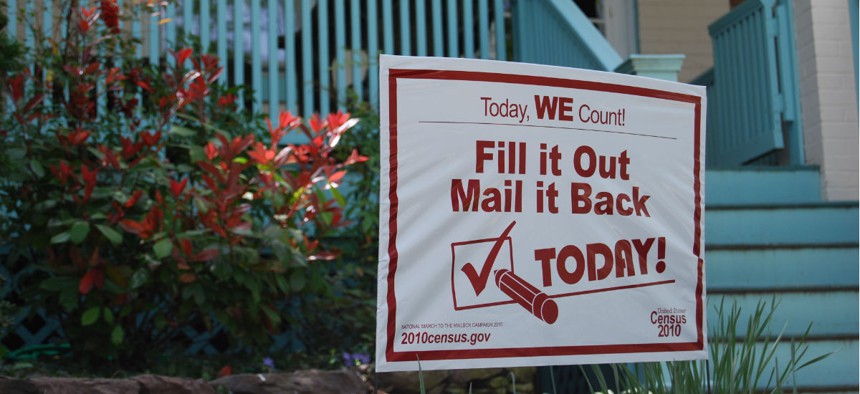
During the 2010 Census, the bureau hired outreach partners to promote the importance of participation among groups that typically have been hard to count. U.S. Census Bureau photo
Census Bureau Needs to Improve Minority Outreach Efforts, GAO Finds
Poor coordination and lack of hiring data are key problems, the watchdog finds.
Twenty months before the 2020 census launches, the Census Bureau is behind on finalizing planning for efforts to reach minorities and hard-to-count populations, according to the Government Accountability Office.
Though efforts to enumerate the groups is a long-standing challenge, the population “is growing larger, more diverse, and more reluctant to participate,” GAO said. “Minorities, young children, and renters are more likely to be missed, while other groups—such as those who may own a second, seasonal home—are more likely to be counted more than once,” analysts noted in a July report released on Monday.
The report was requested by Sens. Claire McCaskill, D-Mo., Gary Peters, D-Mich., and Rep. Elijah Cummings, D-Md.
The current bureau’s “lack of complete and reliable data on hiring partnership staff for the 2010 Census—such as numbers, dates, and positions filled—affects its ability to fully consider tradeoffs it is making among types of staff it plans to hire for the 2020 Census,” it said.
And while the bureau has taken some steps to understand the scope of these efforts, it should do more to coordinate them across the bureau’s operations.
Having accurate information from previous decennial counts is key to minimizing risk of an undercount, auditors wrote, and help the bureau “identify possible synergies, interdependencies, or gaps specific to how they might affect the Bureau’s ability to improve the census.”
Examples of problems during the 2010 big count included the bureau’s assertion that in the end, the 2010 tally did not produce a significant overcount or undercount nationally. However, errors in coverage were unevenly distributed, with a higher undercount on Indian reservations, for instance.
On the plus side, Census recently has been enhancing outreach tools from 2010, such as a communications campaign with paid advertising, partnerships with local organizations, and targeted outreach to immigrant and faith-based organizations. It has added a count of grandchildren to the questionnaire, expanded foreign language translations, and is hiring nearly twice as many partnership specialists as it did in 2010.
Management challenges, however, persist, GAO found. “The bureau’s hard-to-count efforts are distributed across over one-third of its 35 operations supporting the 2020 Census. And while decentralized operations can provide flexibility,” integrating them may prove difficult. Some detailed plans are awaiting updates before they can be circulated, GAO said.
In addition, a tighter labor market than existed prior to 2010 could complicate partnership hiring efforts.
GAO recommended that the Commerce Secretary take steps to integrate outreach strategies and that Census assemble better data on hiring. The bureau agreed.
In a statement, Cummings said, “The undercounting of minority populations in the Census denies African Americans and other minority groups fair representation, and the Census Bureau needs to improve its efforts to effectively count every person to ensure a fair and accurate census.”
NEXT STORY: Watchdog Finds Faults with Hanford Workers’ Comp







